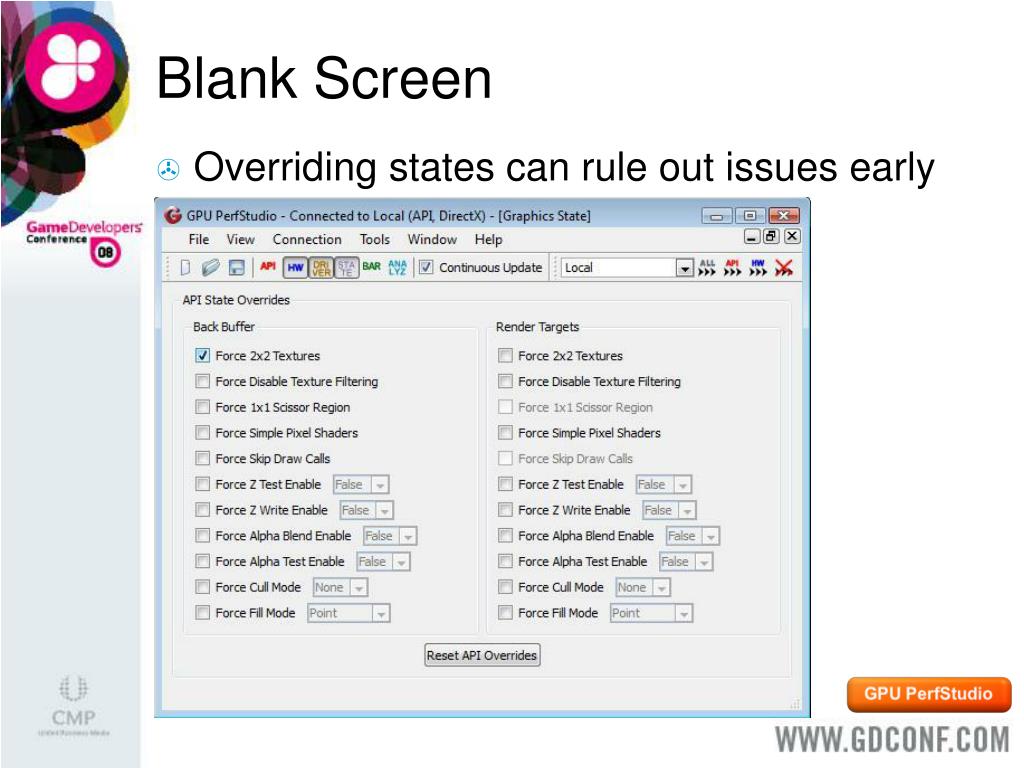
If it is not properly supported by the game in question, it can cause visual glitches. There are three main concerns that appear to be the reason behind this:ġ. It may seem odd that if Triple Buffering resolves the problem of low framerates when VSync is enabled, it doesn't appear as a standard option in many games, or is not enabled by default. If VSync is enabled, then Triple Buffering will also be enabled and will work to counter the negative performance impacts of VSync. As the game is launched you'll hear a small notification sound indicating that D3DOverrider is working. Now whenever you want to run a game with Triple Buffering, simply make sure D3DOverrider is loaded up in the background first before launching the game. If you want, you can set the 'Start with Windows' option to On as well, to ensure D3DOverrider is always active. The default configuration in D3DOverrider is fine that is, 'Application Detection Level' of Medium, 'Force Triple Buffering' On and 'Force VSync' On. To view or alter its settings at any time, click on its icon. Launch the D3DOverrider.exe file and the utility will minimize to your System Tray/Notification Area. You can move this entire directory somewhere else, then uninstall RivaTuner if you don't want to keep it - Direct3D Overrider is a standalone utility which doesn't require RivaTuner. Once RivaTuner is installed, go to your \Program Files (x86)\RivaTuner.\Tools\ directory and you'll see the D3DOverrider directory.
Direct3d overrider not working free#
Instead, you will need to use a utility called Direct3D Overrider (D3DOverrider) which comes with free RivaTuner utility. However this won't work for enabling Triple Buffering in Direct3D-based games, which are the bulk of modern games. However if the game you are using does not have any such option, then you can try forcing Triple Buffering on the game using the methods below.Įnabling Triple Buffering for OpenGL-based games such as Doom 3, Quake 4, Prey or Enemy Territory: Quake Wars is very simple - go to your graphics card's control panel and enable it from there. Some games come with an option to enable Triple Buffering, either from within the in-game settings menus or using advanced tweaks (see my relevant game tweak guide). And it generally does precisely what the name implies, it creates a third buffer in the VRAM, which we can call the Tertiary buffer. Well there is an option which does just that, called Triple Buffering.

Wouldn't it then make sense to have more than two buffers? Why not three buffers for example - that would give the graphics card more room to render frames without having to worry about where to store them before they're sent to the monitor, even if VSync is enabled. This waiting is what causes a drop in FPS when VSync is enabled on many systems, and is covered in more detail in the Vertical Synchronization section of this guide. Only then can the graphics card clear the primary buffer, switch buffers and begin rendering the next frame in the secondary buffer. There is still a problem with double buffering, and that is when VSync is enabled, the graphics card can often fill both buffers and then have to stop working on any new frames until the monitor indicates it is ready for a new frame for its next refresh.

It's like putting out a fire using two buckets of water instead of just one - one bucket can be filled with water while the contents of the other is being thrown on the fire, and then they're switched and the process repeated much faster than just using a single bucket. This is repeated over and over and thus the use of two buffers means that the graphics card is not constantly waiting for a single frame buffer to be cleared before getting on with rendering more frames to store there. When these tasks are done, the buffers are essentially 'flipped' around so that the recently completed frame in the secondary buffer now becomes the primary buffer ready to send to the monitor, while a new frame begins composing in what was the primary buffer a moment ago. The graphics card uses the secondary buffer to compose a new frame while the primary buffer is sending an existing completed frame to the monitor. It was only relatively recently that graphics cards had enough VRAM to provide two buffers at all resolutions, since a single frame of high resolution detailed graphics can take up a great deal of video memory, much less two of them. Both are storage areas on the Video RAM of the graphics card, and the process of using two buffers at one time is called Double Buffering.

There are actually two buffers on modern graphics cards, the Primary Buffer and the Secondary Buffer, also often called the Front Buffer and the Back Buffer. In the Graphics Process section of this guide under Step 8, an overview is provided of the way in which the graphics card holds rendered frames in the Frame Buffer. The Gamer's Graphics & Display Settings Guide Graphics Settings - Triple Buffering


 0 kommentar(er)
0 kommentar(er)
